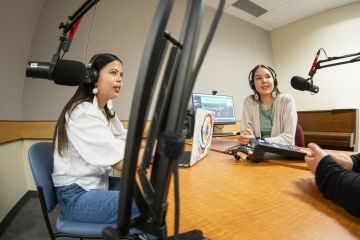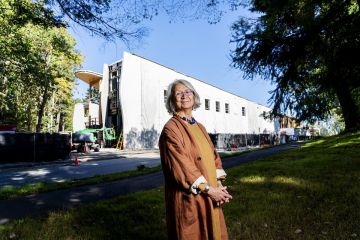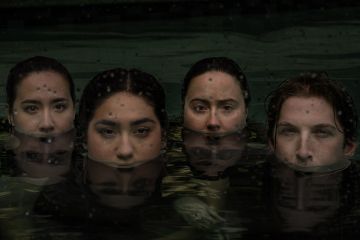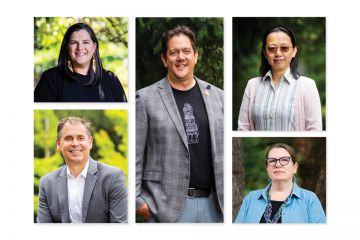Canoe creation re-awakens Pacheedaht ancestors
- Suzanne Ahearne
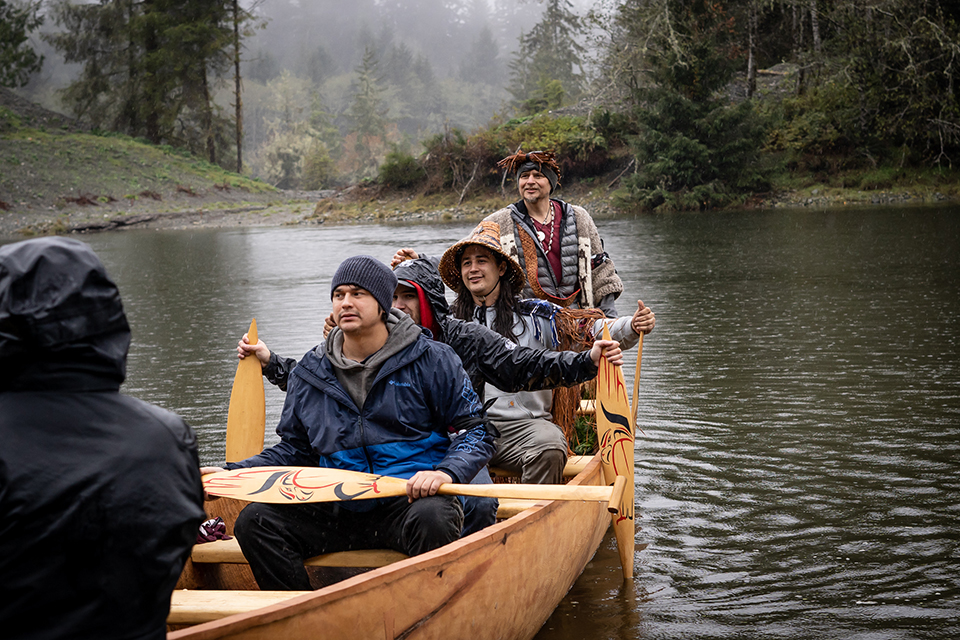
Since the day she was hauled into the Pacheedaht community in June of 2021, she’s been the centre of attention. Teenagers turned off TVs and gaming consoles and left the comfort of Wi-Fi to hang out in the canoe shed to be near her. Kids who’d had a hard time focusing on school all year spent entire days and warm summer evenings listening to stories and songs about her, as wood chips flew from chainsaws and hand tools, and her sleek and powerful shape emerged from the 500-year-old western red cedar log.
And that was the point. The idea—to involve a whole community in the carving of an oceangoing canoe, and surround it with the teachings and culture of their pre-colonial ancestors—was designed with young people in mind. The project aimed to revive confidence, health and well-being, and pride—in particular, among its young men—by creating a work of great physical and symbolic weight.
The canoe, which over the course of the four-month carving process “revealed itself as female,” is the centrepiece of a two-year project that emerged from and is led by the Pacheedaht First Nation (PFN), in partnership with UVic Child and Youth Care professor Sarah Wright Cardinal. It is the first seaworthy dugout canoe to be carved in the community for more than 15 years.
“Reclaiming Nuu-chah-nulth teachings to empower and strengthen the roles and responsibilities of Pacheedaht young men,” is funded by a $200,000 grant from the Social Sciences and Humanities Research Council, a federal agency that supports post-secondary research. This partnership is UVic’s first memorandum of understanding with the PFN, one of 12 First Nations with reserves in the Capital Regional District.
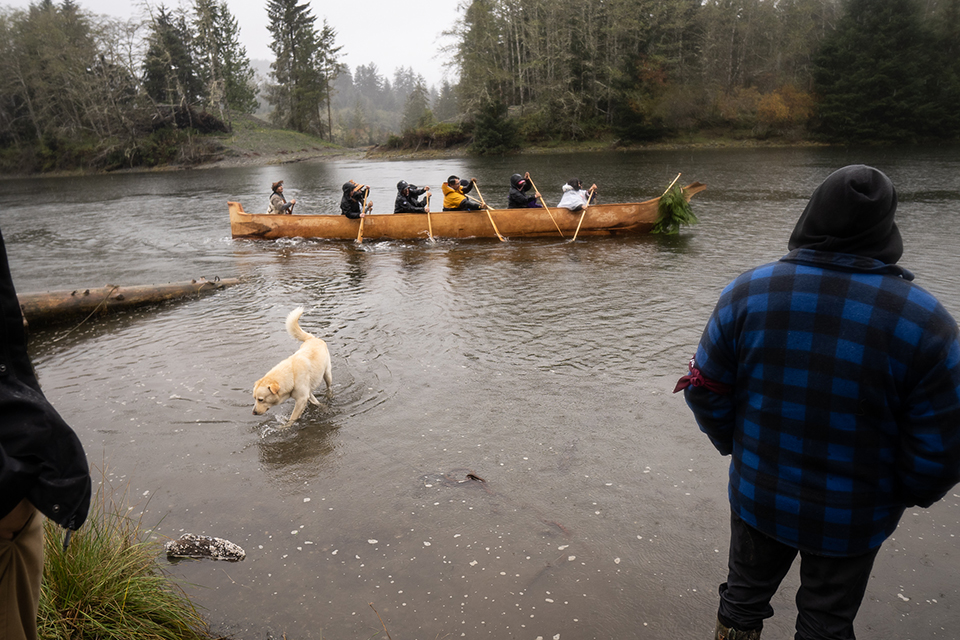
Impacts of isolation
On October 28, the still-raw and unpainted canoe—or čupuc (pronounced chuh-PUTZ)—was blessed according to traditional ceremony. Its launch into the Gordon River that day coincided with one of the many fall atmospheric rivers to barrel through BC. That morning, intense rain and wind knocked down several power poles near Jordan River, about 40km down Highway 14, which connects Pacheedaht with nearby Port Renfrew, and with Sooke and Victoria to the south.
Invited guests from Victoria say they drove over a live wire and around a downed tree to get there, where most of the 130 or so community residents and family from neighbouring Dididaht First Nation waited, chatting excitedly over the din of the rain pounding on the canoe shed’s metal roof and the drone of the diesel generators that power the community every time BC Hydro service gets knocked out.
These weather conditions aren’t uncommon, but they highlight one of the challenges this small and remote community faces: isolation.
Thirteen Pacheedaht children attend the elementary school in Port Renfrew. While there are future plans to build a K-12 school in community, no date for that has been set. For children above grade five, getting to school involves a 150-km, four-hour round-trip bus trip to Sooke. It’s a tough slog. The graduation rate is low.
On top of the impacts of trans-generational trauma, that has placed a lot of weight on its young people. “We’re healing from genocide and assimilative policies,” says Cardinal, who is Cree from Treaty 8 territory and has a PhD from UVic in curriculum and instruction. “So, it’s critically important to provide experiences for youth in their home communities. And we need our young men well for our communities to be well.”
That need was keenly observed by women in community. And it was the vision of some of these women to launch the canoe project. Former PFN Health Director, Roxy Jones, a child and youth care grad who also holds a master’s in Indigenous counselling from UVic, joined Cardinal to write the proposal to fund a master carver to mentor apprentices and provide wraparound supports and cultural teachings. PFN council member Tracy Charlie was also essential to the envisioning, and co-led the project with Cardinal, continuing to provide cultural guidance alongside Elders and knowledge keepers.
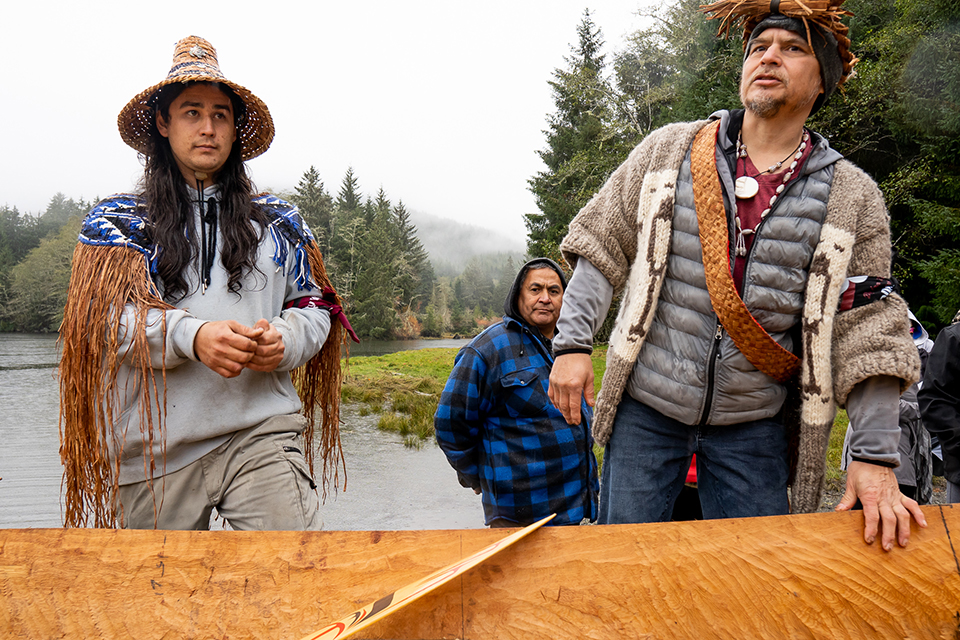
A canoe is not just a boat
In Pacheedaht, as in other communities of the 14 Nuu-chah-nulth nations on Vancouver Island, a cedar canoe is not just a boat. A canoe was once the lifeblood of the economic, social, spiritual, and governance systems of these whaling nations.
The canoe project brought Makah master carver Micah Hawt’wilth’iayatuk McCarty from Neah Bay—across the Juan de Fuca Strait at the northern tip of Washington State’s Olympic Peninsula—to mentor and teach carving skills to two young apprentice carvers, Trystan Dunn-Jones, 25, and Trent Jones, 28. Considered ‘cousins,’ the Makah are related by kinship, language and culture to the Pacheedaht and Dididaht nations.
Chief Jeff Jones says a two-metre-wide, 11-metre-high cedar tree was chosen and felled in the Qala:yit Community Forest—a partnership between the Cowichan Lake Community Forest Co-operative, the Pacheedaht First Nation, and the provincial government—less than a year ago. Some of the first cuts were done at the nation’s sawmill, allowing for slabs of high-end cedar to be used for other project than rather be turned into wood chips.
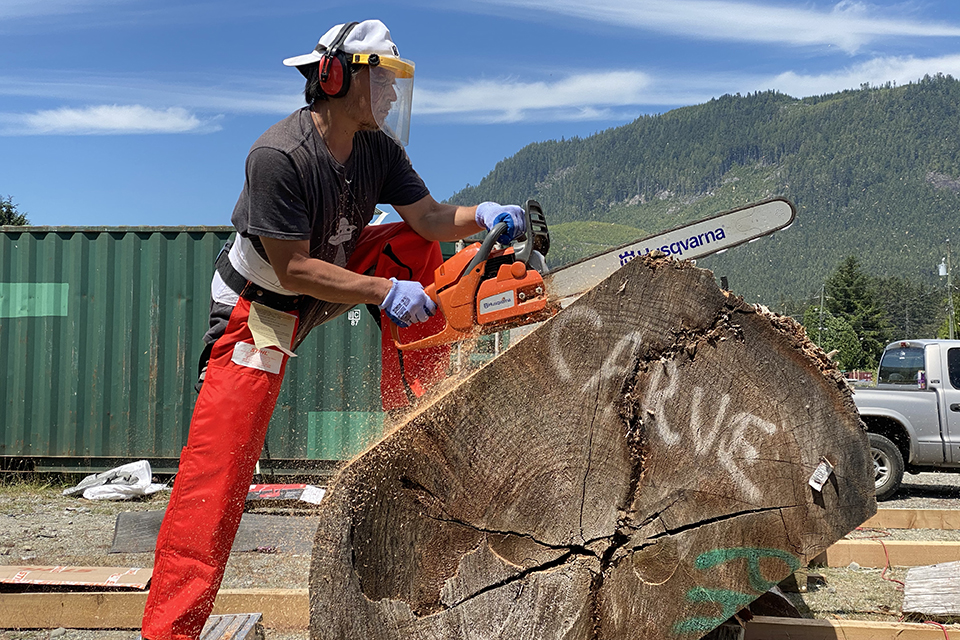
McCarty taught his apprentices relevant drawing and math skills, how to read the log and the grain and how to use power tools and hand tools like the adze. “I think the long-term lesson in this for the young men, was that this is not easy,” says McCarty. “It takes time and patience and perseverance and dedication and a work ethic. And they want to do more.”
Once they’ve put in what he calls the “sweat equity,” the bigger lessons materialize. “With this knowledge and the ability to use their hands and their bodies, to learn from someone who lives these teachings, they see it’s within their reach...and they can move forward and pass that on to their children and the next generations.”
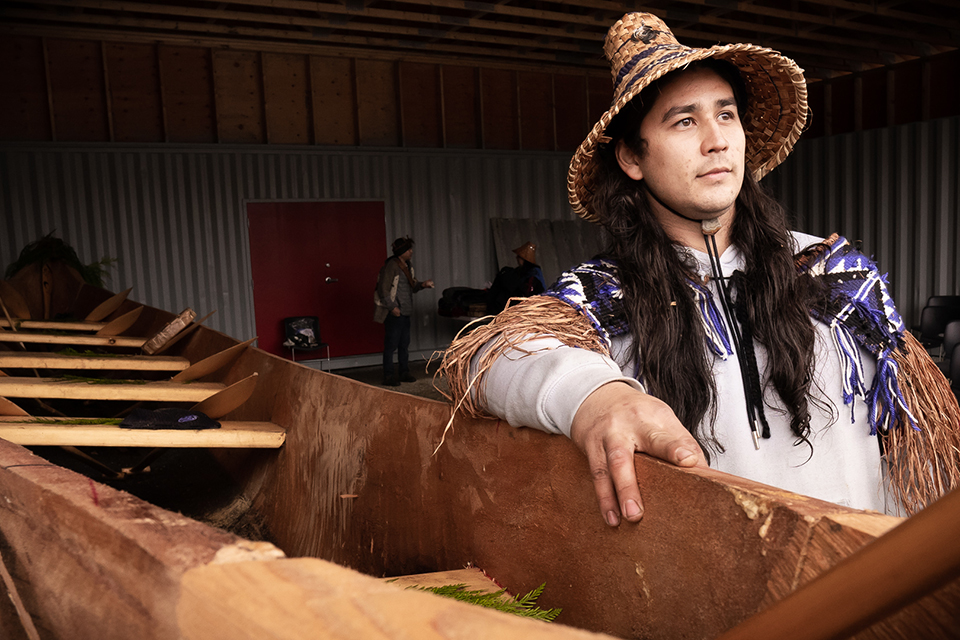
Dunn-Jones is a recent UBC graduate of the Indigenous Teacher Education program. He left the community when he was 16 and, until earlier in the year when he moved back, he’d never carved before. He told CBC: “This was one of the coolest things that’s ever happened in my life.”
“I believe this project brought everything from all aspects of the territory into one—the resources, the people, the culture—into one powerful experience,” he says. “It’s steered my heart into land-based curriculum.”
Wisdom of matriarchs
The circle of women who support this project work to involve the whole community. They bring what McCarty and Cardinal refer to as “a lot of matriarchal wisdom and strength.”
In this circle are two UVic research assistants: Pacheedaht member Sheila Jones, who completed the requirements for her Bachelor of Child and Youth Care on the project, and T’Sou-ke member Trena Black, a PhD student in the Social Dimensions of Health who has matrilineal ties to Pacheedaht. (A third research assistant, Sophie Adams, social sciences undergrad and a Metis community member of Pacheedaht, joined in the fall to make a video about bringing the čupucto life.)
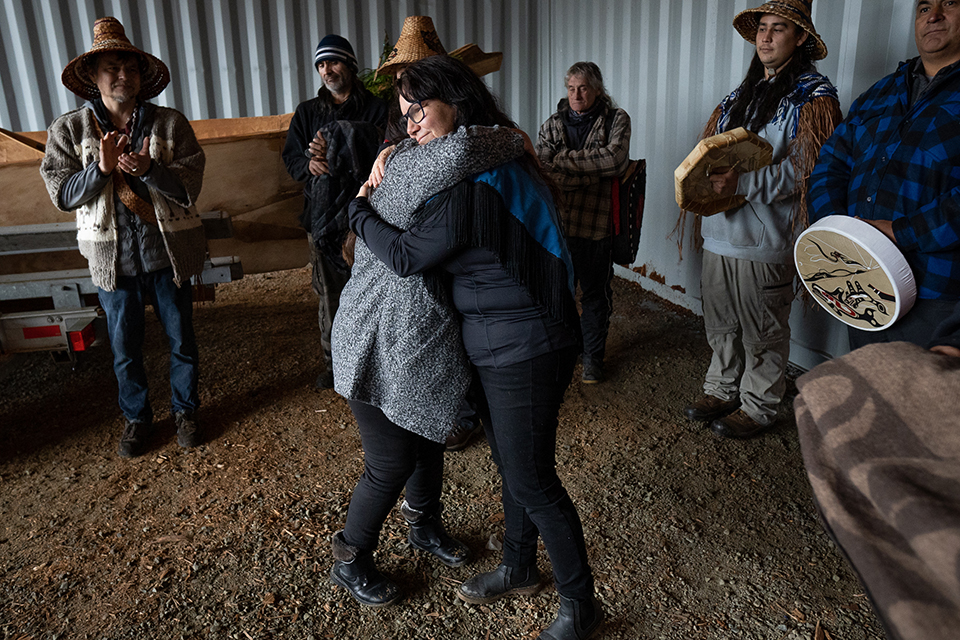
Lighting a flame
Sheila Jones was raised in Pacheedaht, leaving after high school to go to then-Malaspina College (now VIU). She lived in Nanaimo for 27 years until she moved to Victoria to attend UVic. This summer, she developed and ran a weekly role model program for children and youth to listen to Nuu-chah-nulth guest speakers share their pathways to wellness. Role models included UVic Elders-in-residence Kathy LaFortune, a Pacheedaht member, and husband Doug LaFortune.
It’s difficult, she explains, for young men to know how to be a son, a brother, a father—one of the impacts of residential schools and missing role models.
“When I was young,” she says, “I saw a lot of suffering. I saw a lot of suicides.... Things are changing but it’s still very isolated here. It’s important to raise up [the young men] and teach them and give them tools. It lights a little flame.”
She recently started working at the Songhees Wellness Centre as a youth wellness coordinator and will soon be working in area high schools where Songhees members attend.
“I think part of my role here this summer, was just to show that you can go to school, you can complete grade 12, you can go to college, you can go to university. You can leave the community, and come back and help your community.”
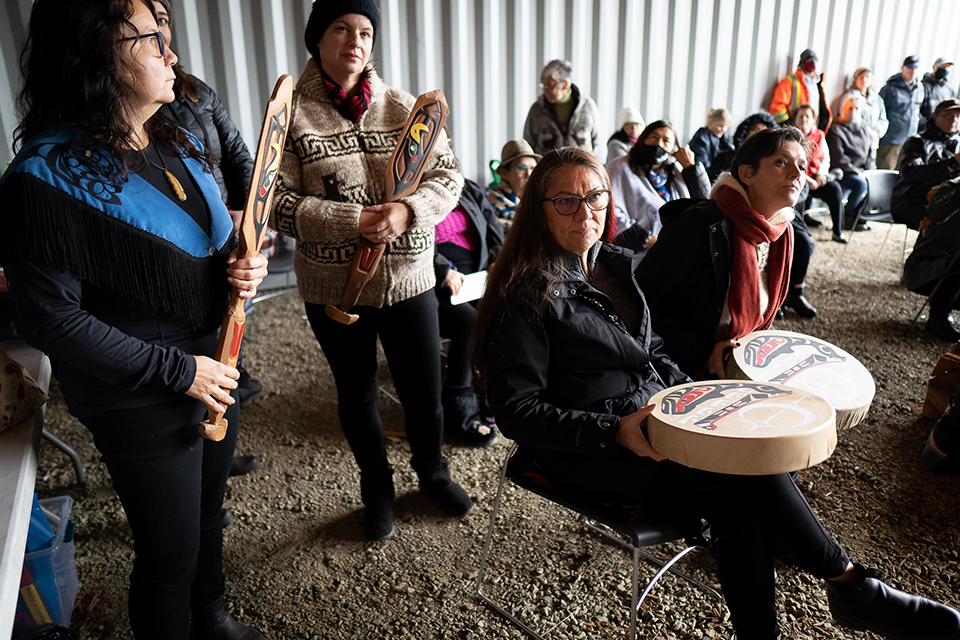
A magnet for joy and laughter
In addition to her PhD studies, Trena Black is also a UVic education alum who was in the first cohort of UVic’s Master’s of Indigenous Language Revitalization program. She was among the group who protected the space around the canoe, making sure good feelings surrounded it. The carving shed became a magnet for joy and love and laughter—and good food which she and others in the community prepared for the children and young men who gathered there. For the summer, she camped on the beach along with Cardinal, assisted with a pit cook, managed the COVID safety plan, and documented the project with photographs and video.
Those photos will illustrate a bilingual Dididaht-English children’s ebook and curriculum guide that she, Dunn-Jones and Cardinal will be co-writing with a community Elder and youth this winter. Black explains the impact on her this way: “Our ancestors’ values are in our DNA, and when we do something to make them proud, you can feel the ancestors’ blood running through your veins.”
This holistic form of teaching that keeps well-being at its centre informs her work as BC School District 61’s first-ever Indigenous elementary specialist teacher—part of a team launched in September 2020. In this role, the teacher of more than 22 years supports teachers and administrators to Indigenize classrooms, make safe spaces, and share Indigenous resources.
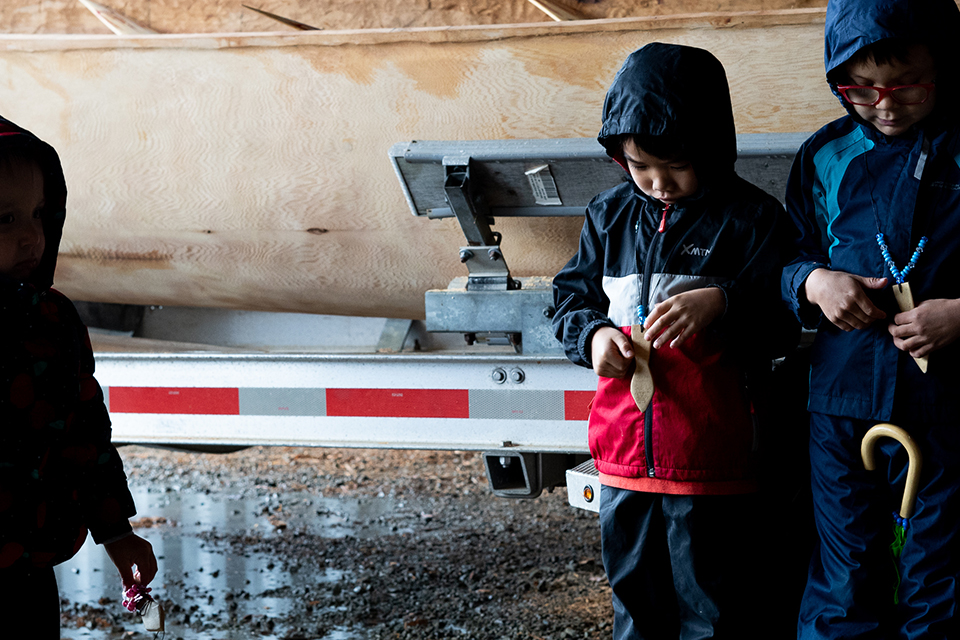
Babies-to-Elders learning
Weekly arts and crafts nights are one component of the project that will continue through the spring of 2022, along with bi-weekly babies-to-Elders intergenerational culture nights with Dididaht neighbours.
“It enlivens the memories of the days when cedar carving, potlatching and canoe carving were integral parts of the community,” explains Cardinal. “The singers and dancers are reawakening that ancient knowledge and natural governance systems that centre on the canoe teachings.”
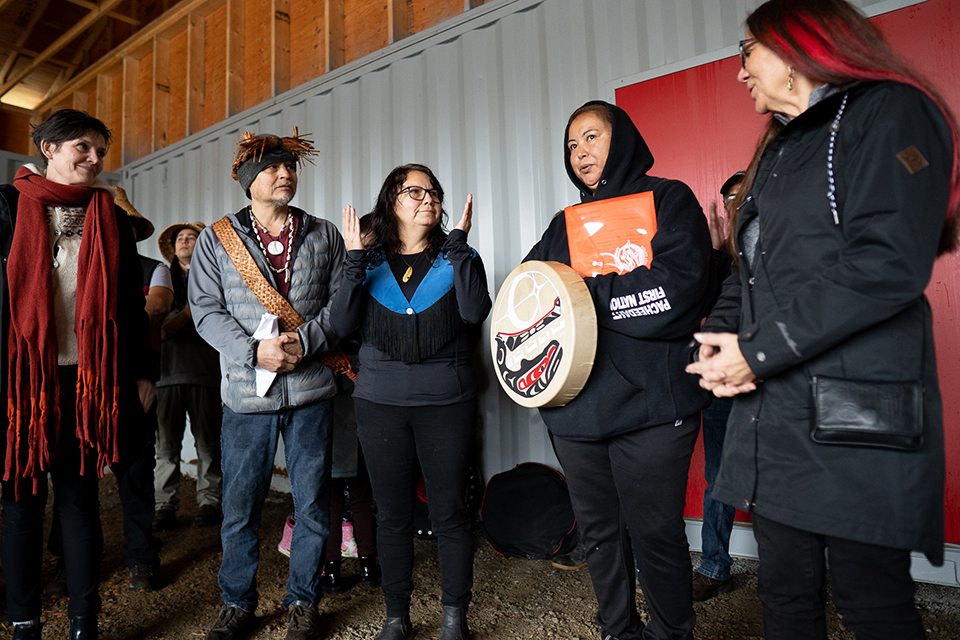
Decolonizing academia
Asked how this type of academic research and partnering differs from traditional research, Cardinal says it’s not what many think of as scholarly work. “This is a ceremonial, education and community wellness journey, and it’s a necessary part of child and youth care today.”
“Everything stays in community. This respects the intellectual property of Pacheedaht and Nuu-chah-nulth teachings. The ancestral and local land and water-based knowledge is enlivened at home in the village, nurturing strong kinship family systems.”
UVic Dean of Human and Social Development Helga Halgrímsdóttir and inaugural Associate Vice-President Indigenous Qwul'sih'yah'maht Robina Thomas made a point to attend the blessing ceremony. Each tell of UVic’s commitments to decolonizing research and renewing relationships with Indigenous communities.
“It’s a wonderful example of committing to working in a holistic way, including the youth, ensuring the transmission of land and cultural teachings, with elders and knowledge keepers guiding the majority of this work.” says Thomas, a member of the Lyackson First Nation and related through matrilineal lines to the Snuneymuxw First Nation, at the blessing ceremony.
Cardinal sees part of her role as a conduit to knowledge-sharing back to the university community: to bring Indigenous content into course curriculum as well as into research, and model “ethical, responsible, Indigenous research.”
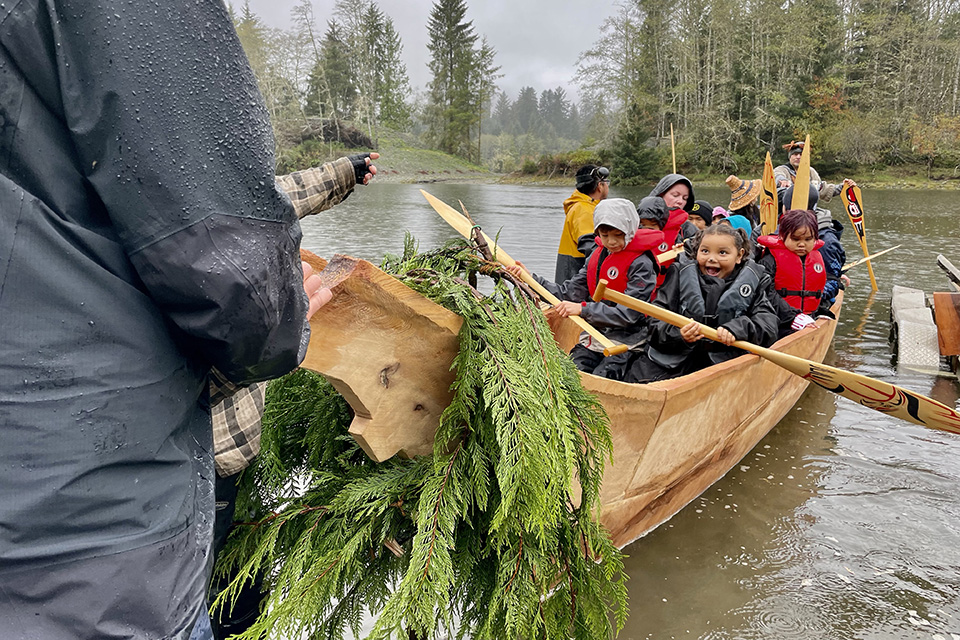
Preparing for her first journey
This winter, master carver McCarty will return to complete the fine-tuning and painting of the canoe before its official naming ceremony next spring. It will also be an opportunity to bring the youth back together in community—especially important through the long, dark season.
And they will be preparing to take the canoe on her first sea journey as part of the summer mini-youth conference that will include relatives from neighbouring Nuu-chah-nulth nations—the final phase of this four-part project.
“It's a very positive thing for our younger generations,” says Chief Jones. “And,” he says from the riverbank, as excited children are ferried by adults in rubber boots and hipwaders to ride in the canoe for what he calls her first bath, “as you can see, there's so much joy and laughter and pride and happiness in the air today.”
Photos
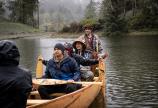
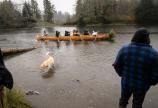
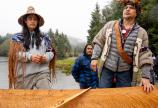
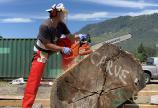
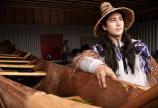
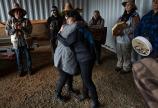
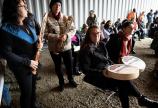
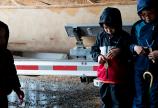
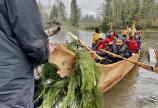
In this story
Keywords: Indigenous, community, research
People: Sarah Wright Cardinal, Roxy Jones, Tracy Charlie, Micah Hawt’wilth’iayatuk McCarty, Trystan Dunn-Jones, Trent Jones, Jeff Jones, Sheila Jones, Trena Black, Helga Halgrímsdóttir, Qwul'sih'yah'maht Robina Thomas
Publication: The Ring

